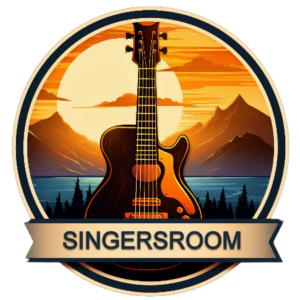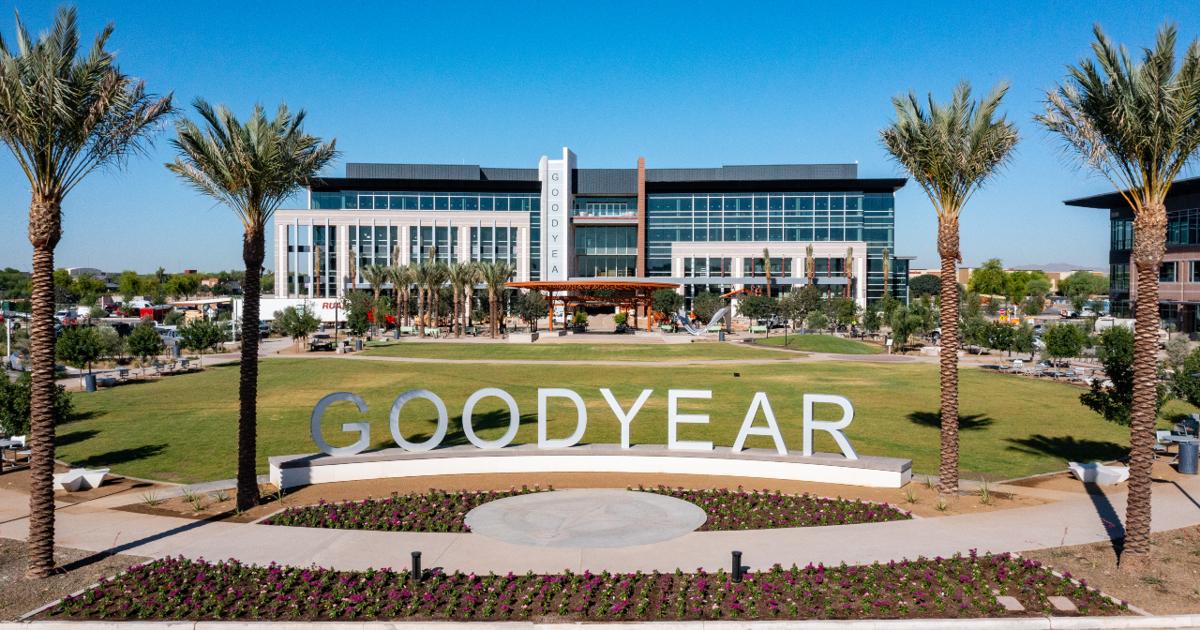Learning how to sing can be a fulfilling experience for those who have a passion for music. However, finding the right singing lessons that fit your needs can be a daunting task, especially for those who live in areas where music schools are scarce. For residents of Goodyear, Arizona, this task may seem even more challenging due to the city’s relatively small size.
Fortunately, there are several singing lessons available in and around Goodyear that can help aspiring singers improve their vocal skills. Whether you are a beginner or an experienced singer, there is a program available to suit your needs.
This article will explore the ten best singing lessons near Goodyear, Arizona, to help you make an informed decision about where to start your singing journey. We have researched and compiled a list of programs that offer various approaches to vocal training, including classical, contemporary, and gospel styles.
Moreover, we have considered factors such as the instructor’s experience, teaching style, class sizes, and fees to ensure that the programs on our list provide quality instruction at an affordable cost. So, whether you’re looking to pursue a career in music or simply want to improve your singing skills, our list of the ten best singing lessons near Goodyear, Arizona, will help you find the perfect program to achieve your goals.
1. Bill Keis Piano Lessons
Website: https://billkeismusiclessons.com/
Address: 650 N 157th Dr, Goodyear, AZ 85338
Bill Keis Piano Lessons is a reputable music school located in Goodyear, Arizona, offering piano lessons for students of all ages and skill levels. The website features a range of programs, including private lessons, group lessons, and online lessons, that are tailored to meet the needs of every student.
Bill Keis, the founder of the school, is an accomplished pianist with over 40 years of experience in the music industry. He is also a renowned author and educator who has written several books on music theory, composition, and improvisation.
The school’s physical location features a state-of-the-art studio equipped with a variety of high-quality pianos and audio equipment to ensure that students receive the best possible instruction. In addition, the school’s online lessons allow students to receive instruction from the comfort of their own homes.
Overall, Bill Keis Piano Lessons is an excellent choice for anyone looking to improve their piano skills or start their journey as a pianist.
2. Ron Ferlito Music

Website: http://www.ronferlitomusic.com/
Address: 16176 W Tonto St, Goodyear, AZ 85338
Ron Ferlito Music is a premier music school located in Goodyear, Arizona, specializing in guitar, bass, and ukulele lessons for students of all ages and skill levels. The school offers a range of programs, including private lessons, group lessons, and online lessons, that cater to students’ individual needs and interests.
Ron Ferlito, the founder of the school, is a professional musician with over 30 years of experience teaching and performing. He has developed a unique teaching approach that focuses on developing students’ technical skills while also nurturing their creativity and musical expression.
The school’s physical location features a comfortable and inviting studio with a variety of high-quality instruments and equipment to ensure that students receive the best possible instruction. In addition, the school’s online lessons allow students to learn from anywhere in the world.
Overall, Ron Ferlito Music is an excellent choice for anyone looking to improve their guitar, bass, or ukulele skills, whether they are beginners or experienced players. The school’s experienced instructors, comprehensive programs, and welcoming atmosphere make it an ideal place to start or continue your musical journey.
3. Kat’s Artist Tree

Website: http://www.katsartisttree.com/
Address: 13770 W Van Buren St, Goodyear, AZ 85338
Kat’s Artist Tree is a vibrant music and art school located in Goodyear, Arizona, that offers a wide range of classes for students of all ages and skill levels. The school’s music program features private and group lessons in voice, piano, guitar, drums, and various other instruments. In addition, the school also offers classes in art, dance, and theater, making it a one-stop-shop for creative students.
Katrina Mullin, the founder of the school, is a passionate musician and educator who has been teaching music for over 20 years. She believes in providing a supportive and nurturing environment for her students to learn and grow, allowing them to discover their artistic potential.
The school’s physical location is spacious and modern, featuring fully equipped studios and classrooms designed to inspire creativity and learning. With its wide variety of programs and expert instructors, Kat’s Artist Tree is a great choice for anyone looking to explore their creative side and develop their musical talents.
4. Music & Arts

Website: https://stores.musicarts.com/az/goodyear/music-store-4311.html
Address: 2025 Pebble Creek Pkwy Suite A05-A06, Goodyear, AZ 85395
Music & Arts is a leading music education provider with a location in Goodyear, Arizona. The school offers a comprehensive music education program that includes private lessons, group classes, and online instruction for students of all ages and levels. The curriculum covers a wide range of instruments, including guitar, piano, drums, violin, and more.
Music & Arts is staffed by experienced and knowledgeable instructors who are passionate about music education. They work closely with each student to create a personalized learning plan that fits their unique goals and interests.
The school’s physical location is well-equipped with high-quality instruments and equipment, and its online lessons allow students to learn from the comfort of their own homes. In addition, Music & Arts also offers instrument rentals, repairs, and maintenance services, making it a convenient and comprehensive resource for aspiring musicians.
Overall, Music & Arts is an excellent choice for anyone looking to develop their musical skills and knowledge in a supportive and dynamic learning environment.
“Tips for Learning How To Sing”
Ear training is an essential aspect of becoming a successful singer. It is the ability to recognize and identify pitches, intervals, chords, and melodies by ear. It is a skill that every singer needs to develop to become proficient in their craft.
There are several methods for developing ear training for singing, including solfege, interval training, and sight-singing. In this article, we will explore some of the best ways to develop your ear training for singing.
1. Solfege
Solfege is a system of musical notation that uses syllables to represent musical notes. It is a fundamental method of ear training and is used by singers and musicians worldwide. The solfege system consists of seven syllables: Do, Re, Mi, Fa, Sol, La, and Ti.
Learning solfege can help you develop your ear training skills by training your ear to recognize the sound of each syllable. To get started with solfege, you can use a piano or keyboard to play each note while singing the corresponding syllable.
Practice singing the solfege syllables in different keys and modes. Start with the key of C major, which has no sharps or flats, and then move on to more challenging keys such as G major, which has one sharp.
2. Interval Training
Interval training is another method of ear training that focuses on recognizing the distance between two notes. It involves singing or playing two notes and identifying the interval between them. There are two types of intervals: melodic and harmonic.
Melodic intervals are played or sung sequentially, while harmonic intervals are played or sung simultaneously. Learning to recognize both types of intervals is essential for developing your ear training skills.
To get started with interval training, you can use a piano or keyboard to play different intervals and sing the corresponding interval name. For example, if you play the notes C and E, you are playing a major third. If you play the notes C and G, you are playing a perfect fifth.
Practice interval training in different keys and modes. Start with the basic intervals, such as major and minor thirds and fifths, and then move on to more complex intervals such as augmented and diminished intervals.
3. Sight-Singing
Sight-singing is the ability to read and sing music notation without any prior preparation. It is an essential skill for every singer and can be developed through consistent practice.
To get started with sight-singing, you can use a music notation app or software to practice reading and singing different musical scores. Start with simple songs and then move on to more complex pieces.
Practice sight-singing in different keys and modes. Start with the basic keys such as C major and A minor and then move on to more challenging keys such as F# major and D# minor.
4. Singing Exercises
Singing exercises are an excellent way to develop your ear training skills. They can help you improve your pitch accuracy, tonal memory, and intonation. There are several singing exercises that you can do to improve your ear training, including:
• Pitch Matching: Sing a note, and then try to match it with your voice. This exercise can help you develop your pitch accuracy.
• Scale Singing: Sing different scales, including major, minor, pentatonic, and chromatic scales. This exercise can help you develop your tonal memory.
• Chord Progressions: Sing different chord progressions, including major, minor, and dominant seventh chords. This exercise can help you develop your ability to identify chords by ear.
5. Music Theory
Music theory is the study of the structure and composition of music. It can help you understand the different elements of music and how they work together. Learning music theory can help you develop your ear training skills by providing you with a deeper understanding of musical concepts and relationships.
To get started with music theory, you can use online resources or enroll in a music theory course. Some essential concepts to learn include:
Scales and Modes: Understanding different scales and modes is essential for ear training. It can help you recognize the relationship between different notes and their corresponding intervals.
Chords and Progressions: Learning about chords and chord progressions can help you identify them by ear. It can also help you understand the harmonic structure of a piece of music.
Rhythm and Meter: Understanding rhythm and meter can help you develop your sense of timing and beat. It can also help you recognize different rhythmic patterns.
Practice Consistently
Developing your ear training skills requires consistent practice. It is essential to practice ear training exercises regularly to improve your abilities. Start with short practice sessions of 10-15 minutes a day and gradually increase the duration as you progress.
You can also incorporate ear training exercises into your singing practice routine. For example, you can practice singing a melody and then trying to identify the intervals between the notes. You can also practice singing chords and trying to identify their quality.
Listen to Different Styles of Music
Listening to different styles of music can help you develop your ear training skills. It can expose you to different musical structures, harmonies, and rhythms. Listening to music can also help you identify different instruments and their corresponding sounds.
Try listening to different genres of music, including classical, jazz, pop, and rock. Pay attention to the musical elements in each piece, including melody, harmony, rhythm, and timbre.
Conclusion
Developing your ear training skills is essential for becoming a successful singer. It requires consistent practice and dedication. Using solfege, interval training, sight-singing, singing exercises, music theory, and listening to different styles of music can help you develop your ear training skills.
Remember to practice regularly, start with simple exercises, and gradually increase the difficulty level as you progress. With time and practice, you can improve your ear training skills and become a proficient singer.

